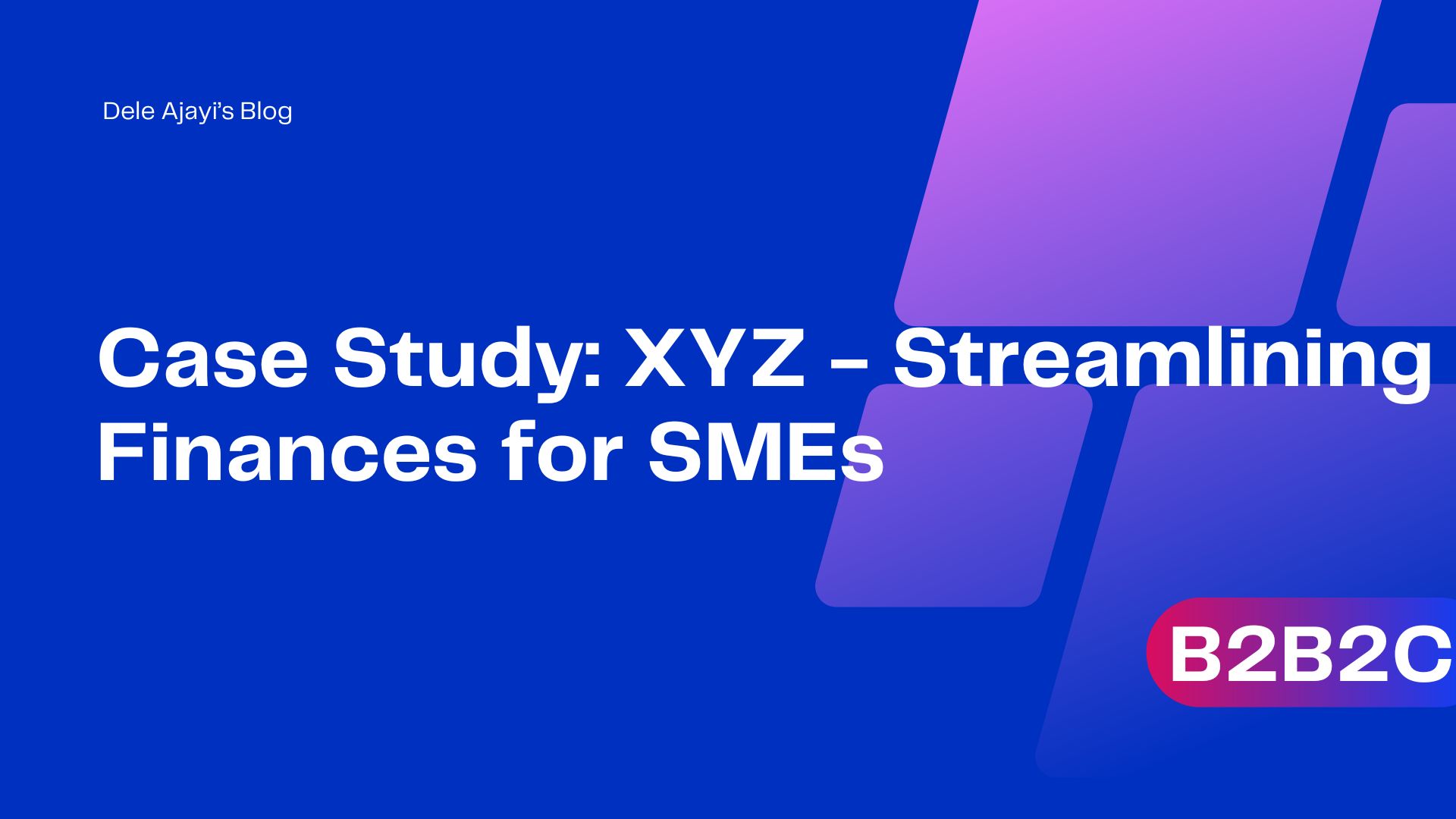Case Study: XYZ - Streamlining Finances for SMEs
 Dele Ajayi
Dele Ajayi
Introduction:
In the dynamic realm of small and medium-sized enterprises (SMEs), where passion fuels innovation, the maze of financial management often demands a guiding light. XYZ emerges as that guiding light, a groundbreaking mobile app meticulously crafted to simplify the complexities of bookkeeping and accounting with seamless user-friendly interface and experience. This solution is more than an application; it's a strategic partner in the journey of SMEs, ushering in an era of financial ease and empowerment.
User Persona:
Meet Kate, the savvy owner of a growing e-commerce business. She's passionate about her products but finds managing finances a daunting task. Kate needs an intuitive solution that doesn't demand a financial background, allowing her to focus on scaling her business.
The Problem:
SMEs like Kate's often wrestle with outdated accounting practices, leading to inefficiencies, errors, and wasted time. Traditional software is either too complex or lacks essential features, leaving business owners frustrated and their financial records in chaos.
The Solution:
XYZ is the answer to these challenges, a mobile app tailored for SMEs that brings efficiency and simplicity to bookkeeping and accounting. It's designed with the end-user in mind, offering a straightforward interface while encompassing powerful features to meet the diverse needs of businesses.
Product Features:
Intuitive Interface: XYZ's user-friendly design ensures that even those with minimal accounting knowledge can navigate effortlessly.
Automated Bookkeeping: Reduce manual data entry with automated processes that sync seamlessly with bank accounts and transactions.
Expense Tracking: Easily categorize and track expenses, providing a clear overview of where the money is going.
Invoice Management: Create, send, and track invoices efficiently, streamlining the invoicing process.
Real-time Financial Reporting: Access up-to-date financial reports, enabling informed decision-making at any given moment.
Metrics and KPIs:
User Engagement:
Daily, weekly, and monthly active users (DAU, WAU, MAU).
User retention rate.
Session duration.
Customer Acquisition:
Cost per acquisition (CPA).
Conversion rate from app downloads to active users.
Source of user acquisition (organic, paid, referral).
Financial Metrics:
Total revenue.
Average revenue per user (ARPU).
Monthly recurring revenue (MRR) or Annual recurring revenue (ARR).
Transaction Metrics:
Number of transactions processed.
Average transaction value.
Transaction success rate.
User Satisfaction:
Net Promoter Score (NPS).
Customer satisfaction surveys.
App store ratings and reviews.
Feature Adoption:
Usage of key features (e.g., invoicing, expense tracking).
Feature-specific engagement metrics.
App Performance:
App load time.
App crash rate.
Server response time.
Security and Compliance:
Number of security incidents.
Compliance with accounting and data protection regulations.
Support and Issue Resolution:
Average response time to customer support queries.
Number of open support tickets.
Resolution time for reported issues.
Churn Metrics:
Churn rate (percentage of users who stop using the app).
Reasons for churn.
Cost Metrics:
Development and maintenance costs.
Cost per active user.
User Behavior Analytics:
Funnel analysis (user journey through the app).
Click-through rate on key elements.
Data Security:
Number of security breaches or unauthorized access incidents.
Compliance with encryption standards.
Competition Benchmarking:
Market share compared to competitors.
Feature comparison and user feedback.
Scalability:
App performance under increased load.
Server response time during peak usage.
Integration Metrics:
Number of integrations with third-party tools.
Integration success rate.
Adherence to Accounting Standards:
Compliance with accounting principles and standards.
Accuracy of financial calculations.
Roadmap - Quarterly Development:
Quarter 1:
Focus on enhancing the user interface based on initial user feedback.
Implement additional expense tracking features.
Quarter 2:
Launch automated bookkeeping functionalities to reduce manual data entry.
Introduce basic reporting features.
Quarter 3:
Roll out advanced reporting capabilities for deeper financial insights.
Strengthen security features and compliance.
Quarter 4:
Launch a mobile version for different operating systems.
Continue refining features based on ongoing user feedback.
Product Lifecycle Phases:
Introduction Phase:
XYZ is launched, emphasizing its user-friendly interface and basic features.
Initial user feedback guides improvements.
Growth Phase:
Automated bookkeeping is introduced, attracting more users.
User engagement and satisfaction metrics start to climb.
Maturity Phase:
Advanced features are rolled out, solidifying XYZ's position in the market.
Customer retention becomes a focal point.
Decline/Renewal Phase:
Regular updates and innovations to counter any decline in user interest.
Exploration of new markets or features to revitalize interest.
In summary, XYZ is more than just an app; it's a financial ally for SMEs, transforming bookkeeping and accounting into a seamless and empowering experience. With a strategic roadmap and a commitment to user feedback, XYZ is poised to make a lasting impact on the financial management landscape for small and medium-sized enterprises.
Subscribe to my newsletter
Read articles from Dele Ajayi directly inside your inbox. Subscribe to the newsletter, and don't miss out.
Written by
